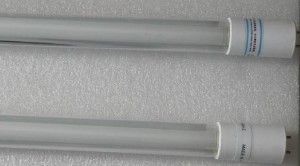As the price of LED Lights compared to traditional light sources is a great disadvantage, how quickly the advantages of the LED really play out has become practitioners must face technical problems. To really carve out a new semiconductor lighting era, efforts to overcome technical problems but also from the following aspects:
1. to improve the LED (t8 led light tubes) luminous efficiency problems.
The main method of the LED luminous efficiency improving is to improve the structure and manufacturing process of the semiconductor light-emitting material and the LED chip. Since this part of the work requires a strong theoretical basis and advanced semiconductor process equipment, is still relatively difficult to achieve 200 lumens / watt target road. Although the traditional CCFL lamp power consumption is a little higher, but the luminous efficiency can reach 50-100 lm / W luminous efficiency white LED devices in the nascent only 20lm / W, which doomed is not suitable as an LCD display backlight LED at the beginning. However, white LED Lamps luminous efficiency of an annual increase rate of 60% increase, so far, the luminous efficiency of white LED devices breakthrough 50lm / W, began to reach the practical level.
2. to solve the life problems of high-power light fades.
As lighting, luminous flux of a single LED (t8 led light tubes) output must be large enough to want to increase the flux LED, you must first inject a sufficient electric power. But the temperature rise of the LED chip can not be too high, otherwise the properties, especially the service life will be greatly affected. Clearly, the design of a larger input power LED components and lighting, in addition to the required larger chip, but also must have good thermal structure.
3. reasonable lighting structure design challenges
LED lighting by a number of LED tubes, the discrete nature of its parameters, also a technical issue. In addition to the pre-selection, classification, and try to ensure consistency, we must also design of the lamp structure (including the LED arrangement and location of the layout) and on an appropriate driver circuit, to prevent the occasional energy concentrated and burned part of the LED.

